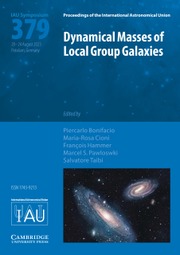Article contents
Parsec-scale X-ray flows in high-mass star-forming regions
Published online by Cambridge University Press: 08 November 2005
Abstract
The Chandra X-ray Observatory is providing remarkable new views of massive star-forming regions, revealing all stages in the life cycle of high-mass stars and their effects on their surroundings. We present a Chandra tour of several high-mass star-forming regions, highlighting physical processes that characterize the life of a cluster of high-mass stars, from deeply-embedded cores too young to have established an HII region to superbubbles so large that they shape our views of galaxies. Along the way we see that X-ray observations reveal hundreds of stellar sources powering great HII region complexes, suffused by both hard and soft diffuse X-ray structures caused by fast O-star winds thermalized in wind-wind collisions or by termination shocks against the surrounding media. Finally, we examine the effects of the deaths of high-mass stars that remained close to their birthplaces, exploding as supernovae within the superbubbles that these clusters created. We present new X-ray results on W51 IRS2E and 30 Doradus and we introduce new data on Trumpler 14 in Carina and the W3 HII region complexes W3 Main and W3(OH).
Information
- Type
- Contributed Papers
- Information
- Proceedings of the International Astronomical Union , Volume 1 , Symposium S227: Massive Star Birth: A Crossroads of Astrophysics , May 2005 , pp. 297 - 302
- Copyright
- © 2005 International Astronomical Union
- 5
- Cited by

